

Project «Voices of Jewish settlements. Vitebsk region.»פיתוח קשרי התרבות בין העמים של ישראל ובלרוס
|
|---|
Website search |
|
MainNew publicationsContactsSite mapVitebsk regionMogilev regionMinsk regionArkady Shulman
|
Travelling with Arkady Shulman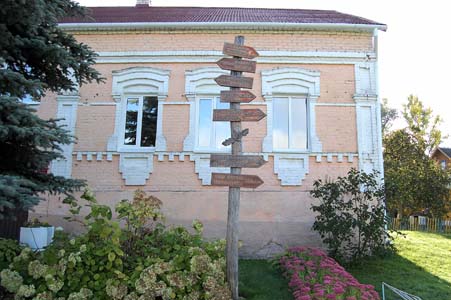 Disna. The building of the city council.
Disna. The building of the city council.
THE CITY WHERE HISTORY LIVES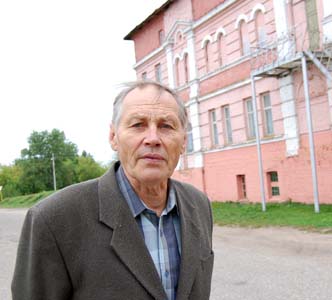 Petr Bogovich.
Petr Bogovich.
Disna is a unique town, not just because it is the smallest town of Belarus. It is unique because, despite the war, it retains the spirit and the beauty of an old shtetl, which unites the west and the east, the Jewish, Polish and Belarusian cultures. One can see it in the architecture, or what is left of the old buildings, in the street planning and the mentality of the original residents. When we arrived in Disna we were accompanied by Peter Vladimirovich Bogovich, a teacher of history, local lore specialist and simply a person who is in love with the town. We began our tour with the building of the city administration. “The building has a rich history, - Peter Vladimirovich began his story. – Before the war rabbi Belostotsky used to live in the right part of the building. In Disna in the 30s there were eight synagogues, each with its own rabbi. However, rabbi Belostotsky was the most respected one. Before 1939 he taught Judaism in a Polish gymnasium. Before the war there were both Jewish and Polish schools here.” There was a heder in Disna for Jewish children, where boys were from a young age taught the Bible and Talmud as well as writing in Hebrew. There was also a secondary school, where all the subjects were taught in Yiddish. All the Jews could speak Yiddish, but also knew Belarusian and Russian. Few people could speak Polish. The war broke into the quiet Disna like a hurricane. As soon as the war was declared, the town was immediately filled with refugees from the neighboring towns and villages. The town was first bombed on June 28th. The town was on fire. As soon as the Germans invaded they ordered all the Jews to come back to Disna. A hundred town’s residents were gathered on the central square and every tenth person was shot. The Nazis invented the reason for their execution: “Someone had cut the German telephone line” Right after the occupation the Germans declared local authorities and selected people for the local police. Mostly Belarusian and Polish peasants volunteered to join the police. The ghetto in Disna was made up of the local residents as well as the residents of the neighboring villages. The ghetto in Disna was not closed but the local peasants were prohibited to visit it. The prisoners were not given food – they had to look for it by themselves. The prisoners also had to pay “taxes” in gold, silver, copper, fabric and furniture. 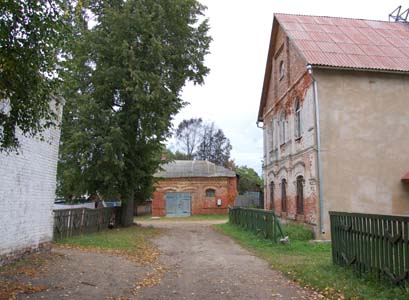
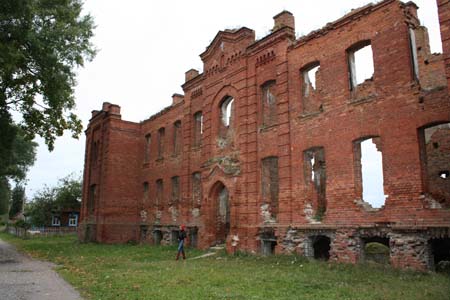
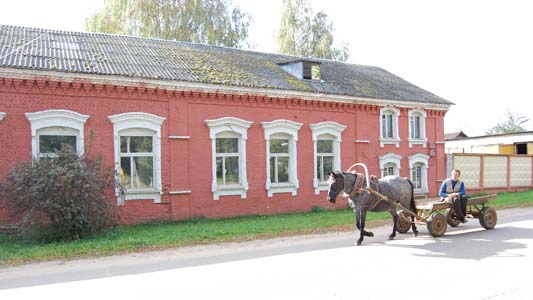 Disna. Old Jewish houses.
Disna. Old Jewish houses.Remains of a former hospital The former synagogue In 1942, during the Passover, Nazis organized the first mass murder of the Jews. Thirty Jews were told to leave their houses and shot in Dorozhkovichi. Among them there was Epstein and his son Boris (they had a dog named Hitler and someone had reported that to the police), Doba Rositsan, Iosif Fux and Shatsman. 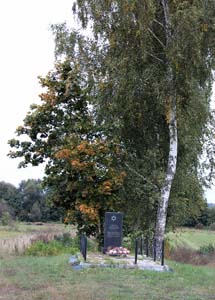
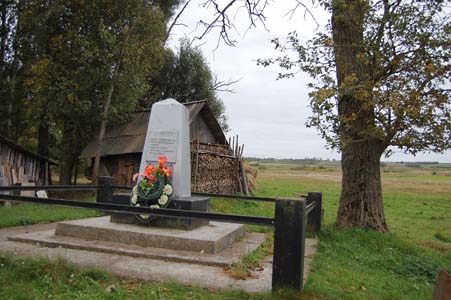
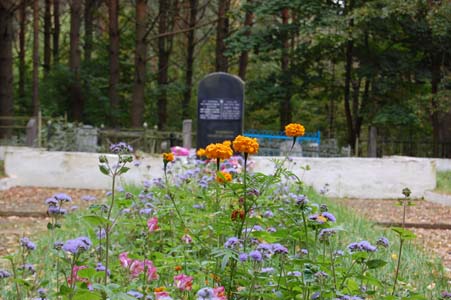
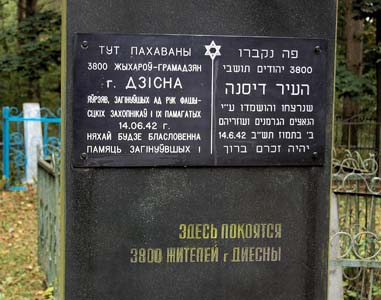 Disna. Memorials to the executed ghetto prisoners.
Disna. Memorials to the executed ghetto prisoners.
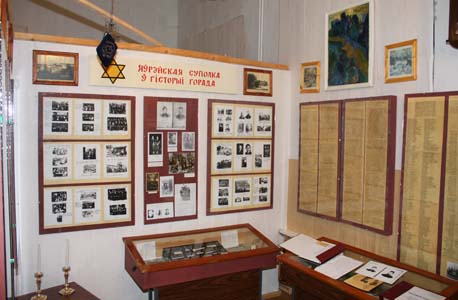 Disna. Museum.
Disna. Museum.
The Passover of 1942 was spent in fear. There were rumors that the ghetto would soon be liquidated. Several ghettos were liquidated in Belarus in the May of 1942. The liquidation of the ghetto in Disna began on June 14th 1942. 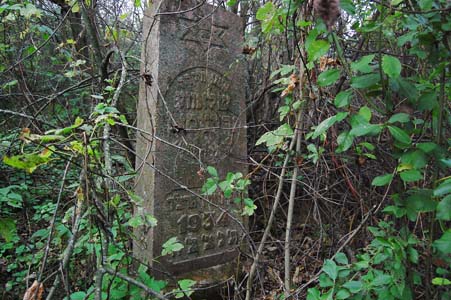 Disna. Old Jewish cemetery.
Disna. Old Jewish cemetery.
The policemen took all the Jews to the execution site. The Jews had to dig their own graves. Then they were shot by both Germans and policemen. The children were buried alive. The execution lasted all day. We do not have the exact data about how many people were murdered on that day. According to some sources the number is around 2,200 people, according to other – 3,800 people. In any case, such numbers are extremely difficult to comprehend. By the evening both the ditches had been completely filled with human bodies. They were covered with sand. Several policemen were left there to guard the grave. At night they were too scared and ran away from the grave. The ground of the grave began moving because there were still those who had been wounded or had fainted and now were trying to get out. This lasted several days. Then blood began coming to the surface. The Nazis ordered the policemen to bring lime and cover the grave with it. Next to the Jewish grave the fascists shot local partisans. Even after that execution there were Jews left in Disna – they were specialists in different spheres and the Nazis needed them – shoemakers, tailors, blacksmiths etc. Those were shot on December 23rd 1943. Disna, September 2009. |
|||
|
|
Jewish settlements in Vitebsk regionVitebsk • Albrehtovo • Babinovichi • Baran • Bayevo • Begoml • Beshenkovichi • Bocheikovo • Bogushevsk • Borkovichi • Braslav • Bychiha • Chashniki • Disna • Dobromysli • Dokshitsy • Druya • Dubrovno • Glubokoye • Gorodok • Kamen • Kohanovo • Kolyshki • Kopys • Krasnopolie • Kublichi • Lepel • Liady • Liozno • Lukoml • Luzhki • Lyntupy • Miory • Obol • Oboltsy • Orsha • Osintorf • Ostrovno • Parafianovo • Plissa • Polotsk • Prozorki • Senno • Sharkovshina • Shumilino • Sirotino • Slaveni• Smolyany • Surazh • Tolochin • Ulla • Verhnedvinsk • Vidzy • Volyntsy • Yanovichi • Yezerishe • Zhary • Ziabki • |
Main |
New publications |
Contacts |
Site map |
Vitebsk region |
Mogilev region |
Minsk region |